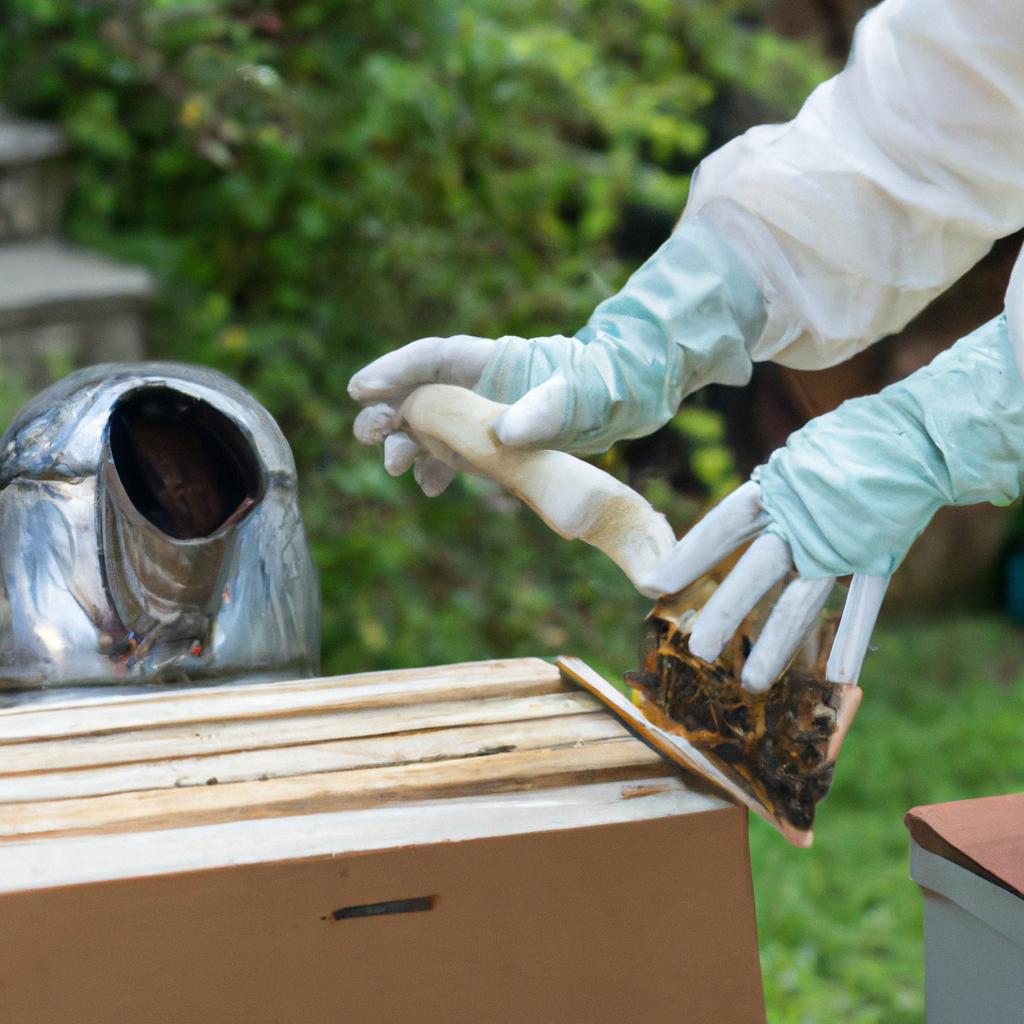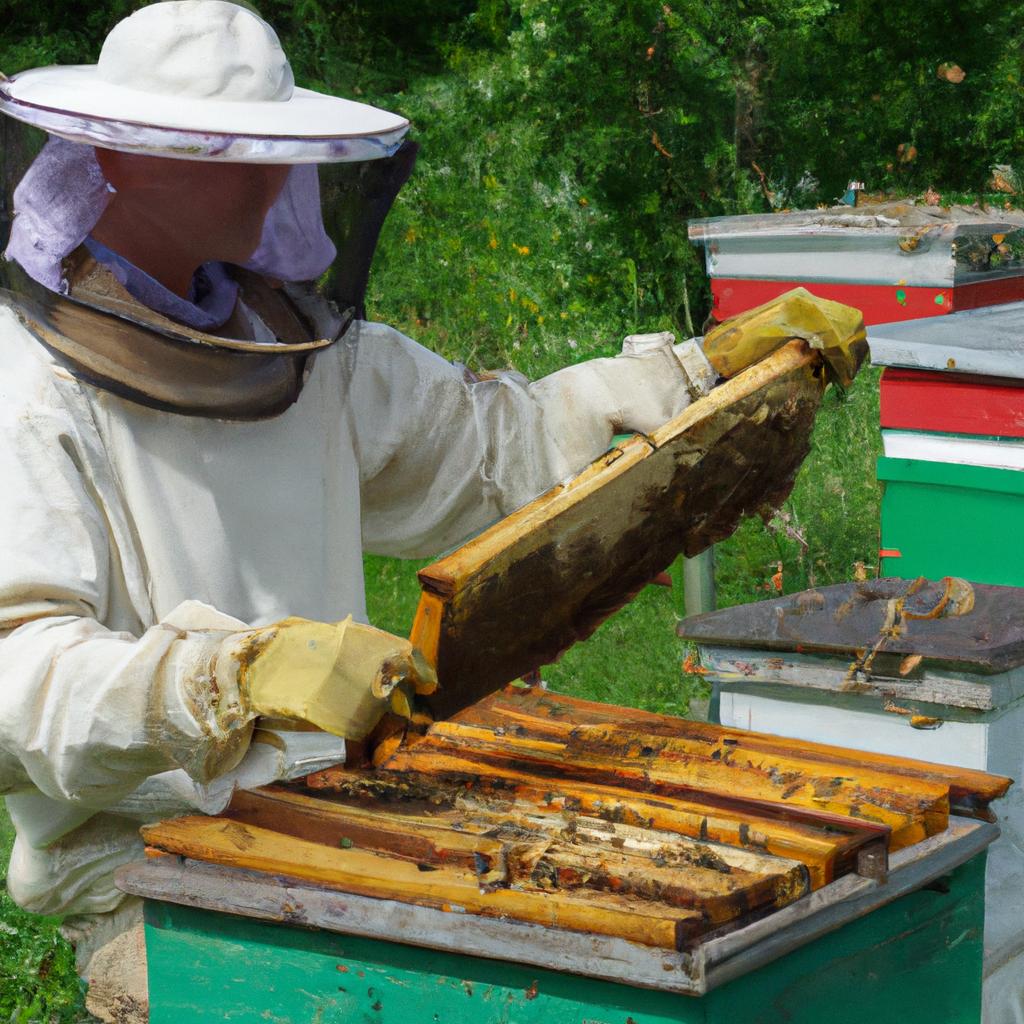Are you a beginner beekeeper wondering how to install bees in a new hive? Proper installation is crucial for the survival and productivity of your bees. In this guide, we’ll provide you with step-by-step instructions on how to install bees in a new hive, from choosing the right hive to post-installation care.
Choosing the Right Hive

The first step in installing bees in a new hive is choosing the right hive. There are several types of hives available, including Langstroth, Top Bar, and Warre hives. Each hive type has its pros and cons, so it’s important to consider your goals, budget, and beekeeping experience when making your selection.
Langstroth Hive
The Langstroth hive is the most common hive type used in North America. It consists of rectangular boxes with removable frames that the bees build their comb on. The Langstroth hive is highly customizable, making it easy to expand or contract the hive as needed. However, it can be heavy and challenging to move around.
Top Bar Hive
The Top Bar hive is a horizontal hive with bars that the bees build their comb on. It’s a popular choice for backyard beekeepers and those who prefer a more natural approach to beekeeping. The Top Bar hive is lightweight and easy to move around, but it can be more challenging to manage than the Langstroth hive.
Choosing the right hive is crucial for the health and productivity of your bees. Consider your goals, budget, and experience when making your selection. In the next section, we’ll discuss how to prepare the hive for installation.
Preparing the Hive

Proper preparation of the hive is crucial for the success of your beekeeping venture. Here are some steps to follow when preparing your hive for installation:
Cleaning and Sterilizing the Hive
Before installing your bees, it’s essential to clean and sterilize the hive to prevent the spread of disease. Use a solution of hot water and vinegar or a commercial hive cleaner to clean the hive components thoroughly.
Assembling the Hive Components
Assemble the hive components according to the manufacturer’s instructions. Ensure that the frames are securely in place and that there are no gaps or cracks that could allow pests to enter.
Placing the Hive in the Right Location
Choose a location for your hive that is sheltered from the wind and receives ample sunlight. The hive should be elevated off the ground to prevent water from entering and should be situated away from areas where people or animals may disturb the bees.
Proper preparation of the hive is crucial for the success of your beekeeping venture. In the next section, we’ll discuss how to acquire bees for installation.
Acquiring Bees
Once you’ve prepared the hive, it’s time to acquire bees for installation. There are several ways to acquire bees, including purchasing a package of bees, buying a nuc (nucleus colony), or catching a swarm. Each method has its pros and cons, so it’s important to consider your goals, budget, and beekeeping experience when making your selection.
Purchasing a Package of Bees
Purchasing a package of bees is a popular method for acquiring bees. A package typically consists of 3 pounds of bees and a queen bee. The bees are shipped in a ventilated box and can be installed directly into the hive. Packages are available for purchase from beekeeping supply companies or local beekeepers.
Buying a Nuc
A nuc, or nucleus colony, is a small established colony that includes bees, brood, honey, and a queen bee. Nucs are more expensive than packages, but they are a more established colony and can produce honey faster. Nucs are available for purchase from beekeeping supply companies or local beekeepers.
Catching a Swarm
Catching a swarm is a free way to acquire bees, but it requires more experience and equipment. Swarms occur when a colony splits, and a group of bees leaves the hive to find a new home. Swarms can be caught and installed in a hive, but it’s important to ensure that the swarm is healthy and disease-free before installation.
Factors to Consider When Choosing a Bee Supplier
When choosing a bee supplier, there are several factors to consider. Here are some key factors to keep in mind:
Reputation and Experience
Choose a supplier with a good reputation and experience in beekeeping. Look for reviews and testimonials from other beekeepers to ensure that the supplier is reputable.
Quality of Bees
Ensure that the bees are healthy and disease-free before installation. Ask the supplier about their beekeeping practices and if they test their bees for diseases.
Availability and Price
Consider the availability and price of bees from the supplier. Packages and nucs are typically available in the spring, and prices can vary depending on the supplier and location.
Acquiring bees is an important step in installing bees in a new hive. Consider your goals, budget, and beekeeping experience when choosing a method for acquiring bees and a supplier. In the next section, we’ll discuss how to install bees in the hive.
Installing Bees in the Hive
Once you have acquired your bees and prepared the hive, it’s time to install the bees in the hive. Here are some steps to follow when installing bees in the hive:
Preparing the Bees for Installation
Before installing the bees in the hive, it’s essential to prepare them for the move. Keep the bees in a cool, dark place for a few hours before installation to calm them down. Ensure that the queen bee is inside the package and that the bees have access to food.
Techniques for Installing Bees in the Hive
There are several techniques for installing bees in the hive, including the shake method and the direct release method. The shake method involves shaking the bees into the hive, while the direct release method involves releasing the bees directly into the hive. Choose the method that works best for you and follow the instructions carefully.
Common Mistakes to Avoid During Installation
Common mistakes to avoid during installation include installing the bees too late in the day, failing to remove the queen cage, and mishandling the bees. Ensure that you carefully follow the instructions and take your time to avoid mistakes.
Post-Installation Care
After installing the bees in the hive, it’s essential to provide them with proper care to ensure their survival and productivity. Here are some tips for post-installation care:
Monitoring the Bees’ Activity and Health
Regularly monitor the bees’ activity and health to detect any issues early. Check for signs of disease, pests, and other issues that could affect the bees’ health and productivity.
Regular Maintenance and Inspection of the Hive
Regularly inspect and maintain the hive to ensure that it’s in good condition. Check the frames for signs of comb building, honey production, and brood production. Ensure that the hive is clean and free of debris.
Tips for Ensuring the Bees’ Survival and Productivity
To ensure the bees’ survival and productivity, provide them with ample food, water, and shelter. Avoid using pesticides and other chemicals that could harm the bees. Finally, ensure that the hive is located in an area that provides ample sunlight and protection from the wind and other elements.
In conclusion, installing bees in a new hive requires careful preparation, installation, and post-installation care. By following the steps outlined in this guide, you can ensure that your beekeeping venture is successful and productive. For more information on beekeeping, visit BeeKeepinglove.com, where we provide resources and support for beginner and experienced beekeepers alike.
